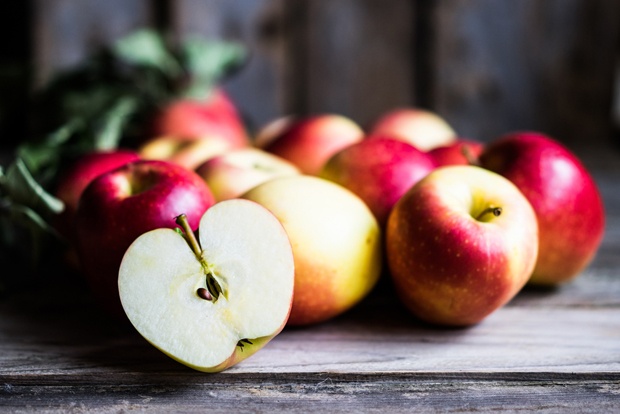
Whether we like it or not, Labor Day signals the end of summer and the beginning of fall for most of us, even if fall doesn’t officially begin until September 23, 2015.
The kids are going back to school, the days are shorter, and the temperatures just a little bit cooler in most places. And there’s one more change that those of us eating a clean diet really notice-a significant shift in the available fresh produce.
There’s no doubt that our diets tend to change with the seasons. The main thing we have to worry about as we go into fall and winter is that dreaded weight gain. A survey by Forza Supplements found that dieters can gain up to five pounds in the fall, and we all know that as the days get ever shorter that our energy levels change, leading us to less activity, which can also translate into additional pounds.
In fact, the survey showed that September is the second “fattest” month after December, as we lose our motivation to fit into that summer bikini and start indulging a bit too much.
Fortunately, you can continue to enjoy a clean-eating diet and maintain your figure with a few changes to your eating habits.
Foods in Season are Higher in Nutrients
Did you know that foods are more nutritional when they’re in season? Out-of-season food often has to travel a long way, and is harvested long before it arrives at your table-both of which can result in lower nutrient levels.
A 2008 study, for example, found that fall values for vitamin C in broccoli (when it’s in season) were almost twice as high as spring values for the same varieties. In fact, the difference between fall and spring was larger than the difference between organic and conventional! That’s how important it is to eat seasonally.
“When you eat seasonally,” Andrea Giancoli, spokesperson for the Academy of Nutrition and Dietetics, told Weather.com, “you’re going to get the fruits and vegetables that have traveled the least amount of time and have been picked close to their peak of ripeness. They’re likely to have a higher vitamin content than those shipped globally, plus you’re supporting your local farmers and local economy.”
On the whole, if you buy fresh foods harvested during the season you’re in, you’ll enjoy a higher level of nutrients, which is best for overall health.
7 Tips to Continue Healthy, Clean Eating Through the Fall
The key is to change-up your recipes so you can take advantage of the foods that are in season. Don’t forget to change some of your other healthy habits to accommodate your new fall schedule, too!
- Don’t abandon your farmer’s market: Most stay open through the fall months, and remain the best place to get fresh, local produce that’s full of vitamins and minerals.
- Eat fruits in season: This is the time for apples, peaches, citrus fruits, pears, pomegranates, dates, kiwi, artichokes, cranberries, persimmons, grapes, and grapefruit.
- Eat in-season veggies: Look for sweet potatoes, pumpkin, winter squash, Brussels sprouts, parsnips, rutabaga, cauliflower, turnips, onions, garlic, beets, Belgian endive (chicory), zucchini, tomatoes, and carrots.
- Eat in-season greens: You know it’s good to eat dark green, leafy veggies. In the fall, your best bets are kale, turnip greens, Swiss chard, and mustard greens.
- Change up your meats: If you happened to indulge in more red meat over the summer (for barbeques and the like), it’s time to bring it back to more fish, turkey, and chicken. Include a vegetarian meal at least once a week. Remember-you probably need less energy in the fall, so avoid too much red meat to keep your calories down.
- Don’t forget to drink water: It’s natural in the hot weather to drink more water, but as it cools down, we forget. Keep a water bottle with you and sip regularly. Set a daily goal for how many glasses you’ll drink so you can be sure you’re getting enough.
- Watch out for breakfast: Fall schedules tend to be different than what you had in the summer. Don’t let hectic morning schedules rob you of a healthy breakfast. Green smoothies are great if you’re in a hurry.
Do you have other suggestions for fall clean-eating? Please share them with our readers.
Sources
Wunderlich SM, et al., “Nutritional quality of organic, conventional, and seasonally grown broccoli using vitamin C as a marker,” Int J Food Sci Nutr., February 2008; 59(1):34-45, http://www.ncbi.nlm.nih.gov/pubmed/17852499?ordinalpos=1&itool=EntrezSystem2.PEntrez.Pubmed.Pubmed_ResultsPanel.Pubmed_DefaultReportPanel.Pubmed_RVDocSum.
Martha Cliff, “Ready those elasticated waists…September is the second ‘fattest’ month of the year,” Daily Mail, September 24, 2014, http://www.dailymail.co.uk/femail/article-2767641/Ready-elasticated-waists-September-second-fattest-month-year.html?ITO=1490&ns_mchannel=rss&ns_campaign=1490.
Annie Hauser, “19 Incredible In-Season Fall Superfoods,” Weather.com, December 10, 2014, http://www.weather.com/health/news/19-incredible-season-fall-superfoods-20130909.

